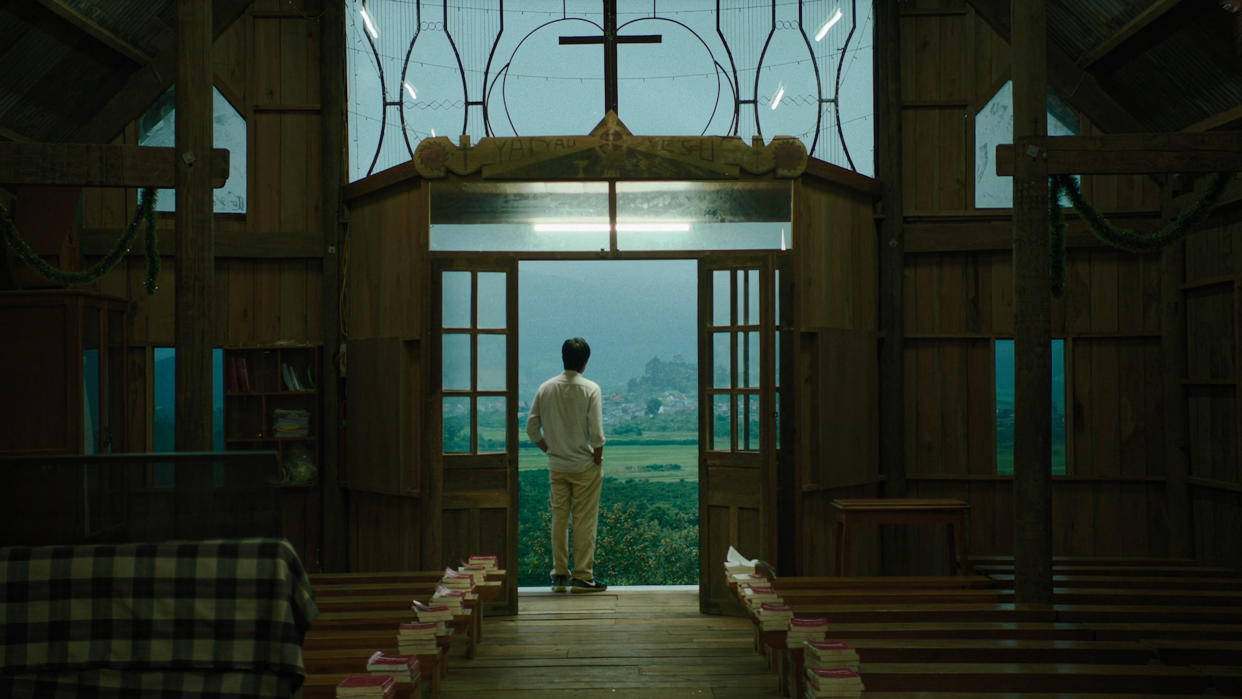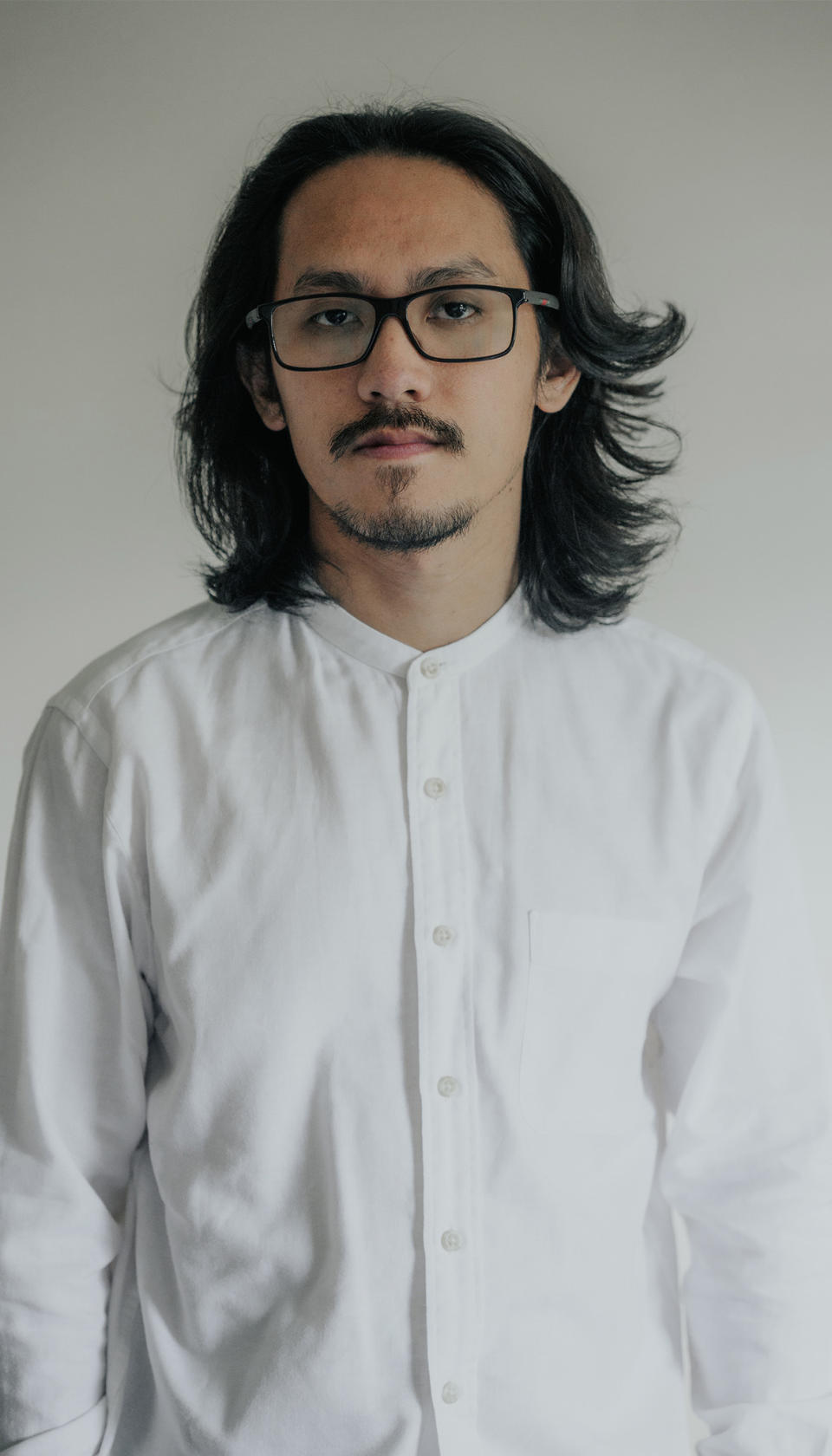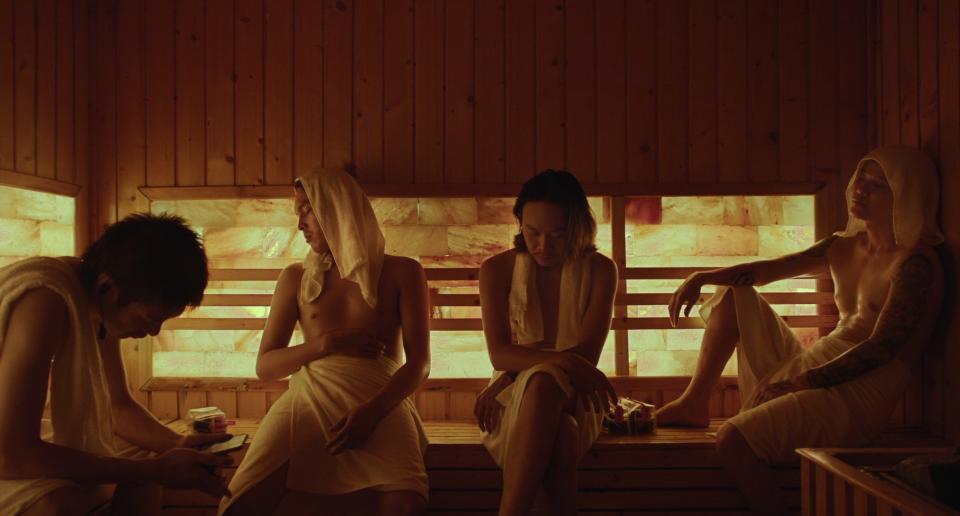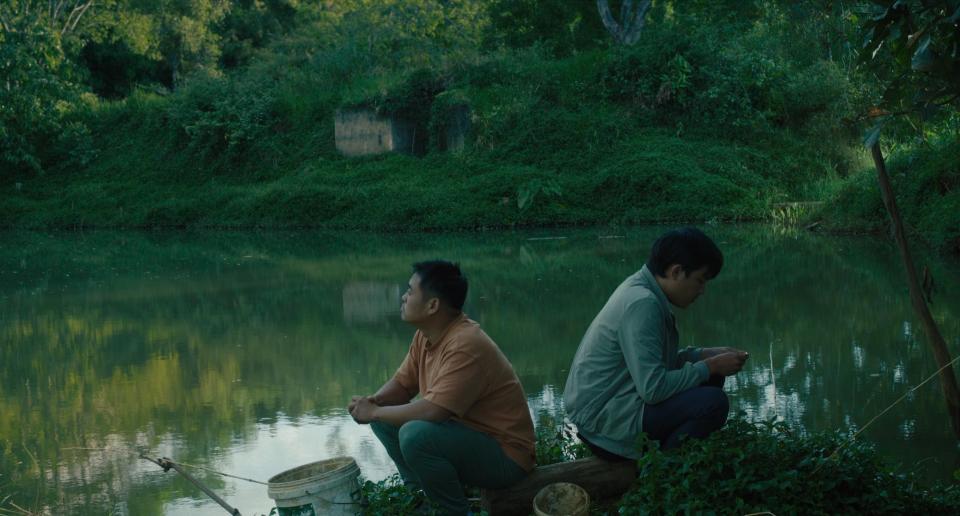How Do You Make the Year’s First Cinematic Masterpiece? First, Consider It an Act of Faith

- Oops!Something went wrong.Please try again later.
Growing up, Vietnamese writer and director Pham Thien An didn’t envision becoming a filmmaker. Eventually, the prospect of capturing moving images as a career path did reveal itself to him, but in unexpected fashion: as a trade. Only later did his professional dream evolve into a transcendent, creed-affirming artistic endeavor.
That’s already started to pay off for the budding star. An’s transfixing, three-hour film “Inside the Yellow Cocoon Shell” won the Camera D’Or, an award honoring the best first feature, at last year’s Cannes Film Festival. For An, who was raised Catholic, the creation of this imposing debut intertwined with the strengthening of his religious beliefs.
More from IndieWire
“It was faith that guided me through the process of taking filmmaking seriously,” An told IndieWire during a recent video interview speaking via an interpreter. “It was a blessing to get the chance to direct a film like this.”
An explained that the titular yellow cocoon shell serves as metaphor for our desire for material wealth and recognition, a desire he’s still trying to fully escape. “Before coming to cinema, I was very preoccupied with the pursuit of money and fame. I was indulging,” he said. “The question of the meaning of my life became more emphasized when I started making films.”
Composed of technically breathtaking sequences, several of them uninterrupted long takes with skillfully choreographed camera movements, “Inside the Yellow Cocoon Shell” tracks Thien (Le Phong Vu), a young man questioning his faith in God and the afterlife, as he travels from Saigon to his rural hometown to deliver the body of his late sister-in-law.
Throughout each of these gorgeously composed segments, Thien encounters people who assert or further challenge his already embattled conviction. There’s his friend who’s renouncing his worldly life to follow a more spiritual pathway, an elderly man still haunted by his memories of war, his former girlfriend turned nun, a woman who imparts mystifying wisdom, or his 5-year-old nephew harboring his own inquiries after his mother’s passing.
That “Inside the Yellow Cocoon Shell” isn’t the work of a veteran director, or even someone with traditional filmmaking training renders its existence all the more fascinating. While in college, An studied information technology. Near the end of his education, however, he found himself on the verge of migrating to the U.S., where his family was already residing. In preparation for the move, his loved ones suggested he learned a useful trade to guarantee employment in their new adoptive country.
An chose hairdressing. Given his IT background, he soon longed for a more high-tech occupation and gravitated toward film production. Yet, in order to make such a pursuit financially viable, An had to learn filmmaking as an applicable skill that could earn him a living. He got a job with a wedding videography business. “That’s how I got interested in filmmaking, because I wanted to make wedding videos more cinematic,” An recalled. “But I soon realized wedding videography had a lot of limitations.”

In 2014, An decided to make a short film in which he could explore his artistic impulses, and joined a 48-hour short film competition. “My first short film looked more like a music video, but that has developed into my filmmaking process today,” he said.
An followed those early exercises with “The Mute,” his first internationally recognized work, where his interest in the contours of faith was already present. Although he knew the general concept for his first feature for a long time, he needed to have at least to completed short films under his belt in order to apply for several funds to finance the longer project.
“Making a feature film is hard work, because you need money and experience, and I didn’t have either at that time,” An said.
To gain confidence and fulfill those prerequisites, An took the single-take opening sequence of his feature, in which three friends discuss their thoughts on spirituality, and turned it into the short film “Stay Awake, Be Ready,” which premiered at Cannes. The film illustrates both thematically and aesthetically what An intended to flesh out on a bigger canvas.
Still, halfway through the process of finally shooting “Inside the Yellow Cocoon Shell,” An realized that his predilection for long, uninterrupted shots would result in a rather extensive final cut. “I was already bracing myself for it,” An confessed.
The most ambitious of those intricate long take runs for about 20 minutes and appears early in the film, when we see Thien travel down the road on motorbike to visit the home of an elderly man who performs shrouding services for all local funerals. “I wanted to have a sequence that felt quite spontaneous,” An said. “I didn’t want to always conform to an ordinary structure. I wanted to create a moment for the audience when they could playfully depart from the main plot of the story.”
Inspired by his love of Béla Tarr’s works, this cinematic language consisting of very long slow takes presented plenty of obstacles, particularly for this sequence.

“I had vividly imagined how the camera was to move and all the starting and ending points to execute that shot. I decided to shoot this without my DP,” An said. “It was quite risky, but I wanted to shoot it at that point in time. I rehearsed it for 3 weeks, but there factors out of my control: the weather, animals, kids in the village, and even the old man himself who couldn’t act.”
To switch the viewpoint of the audience and to change the geometry of the scene, An often relies on dolly shots, moving in and out. It creates, he thinks, a sense of mystery and makes the audience more curious about what is to happen next. In most cases the viewer can’t predict when the camera is going to push in or out. It’s as if the camera becomes “the viewpoint of a ghost floating around the scene,” discovering the event with the audience.
“I didn’t want to use still scenes because stiller scenes require cutting so you can get closer to the character,” said An. “That’s why I preferred longer takes. And I figured that the dolly allows for the most natural transformation for the camera.”
Later, during the editing stage, An’s first cut was around 3 hours and 45 minutes. He pushed himself to kill plenty of darlings and brought it down to just under three hours. To his surprise, it wasn’t the length that was cause for concern for his producers, but the ambiguity of the film’s ending.
An recalls writing a strongly worded letter to his French producer Marie Dubas asking her to stop interfering with his narrative choices. He also refused a request form the World Cinema Fund to adjust the ending to qualify for funding. “If the ending had stayed the way they wanted it, the film would have been 5 hours long, because it required more explanations about Thien’s missing brother,” An said.
After the success at Cannes, An wanted Vietnam to be the first country to see “Inside the Yellow Cocoon Shell.” Reviews were mixed when the film was released in his homeland last August, but the subject matter sparked conversations among both audiences and critics. (Reviews have proven easier to classify: the film is roundly hailed, with many already calling it one of the masterpieces of the year.)

“Catholicism in Vietnam is not a major religion, so most people who watched the film were atheist or Buddhists,” An noted. “But those not familiar with Catholicism found a new perspective in the film. I really enjoyed hearing the perspectives of Vietnamese people watching the film before it got shown around the world.”
An was also pleased that the film didn’t undergo any cuts by Vietnamese authorities, who often censor homegrown productions they deem portray the country in a negative light. Local audiences were able to experience his uncompromised vision for themselves.
“A lot of people in Vietnam had never seen a film a three-hour film and there are a lot of elements in the film that just were not within their expectation of what films should be, like the naturalistic acting or the way it’s shot,” An explained.
Each time a hurdle emerged over the course of the entire affair, An would have doubts about his faith. He believes certain scenes or elements were sent to him from above. Thus, he couldn’t comprehend why he faced difficulty executing God’s plan for the film.
“I would wonder what God wanted me to do, since there were obstacles within what was delivered to me,” he said. “I thought, ‘How would I get through this?’ Those were moments of a lot of questions. I had to spend a lot of alone quiet time, even a couple days, to think.”
Eventually, An began to interpret every setback on set or in post-production as further affirmation of his faith, because even if he thought he wouldn’t, he overcame all of them. “Cinema is a calling for me,” said An. “I still believe that in order to express my faith I need something to mediate between me and the divine. Cinema is that tool that allows me the chance to express my faith.”
A Kino Lorber release, “Inside the Yellow Cocoon Shell” is playing in theaters now.
Best of IndieWire
Where to Watch This Week's New Movies, Including 'Argylle' and 'How to Have Sex'
Christopher Nolan's Favorite Movies: 40 Films the Director Wants You to See
Sign up for Indiewire's Newsletter. For the latest news, follow us on Facebook, Twitter, and Instagram.

